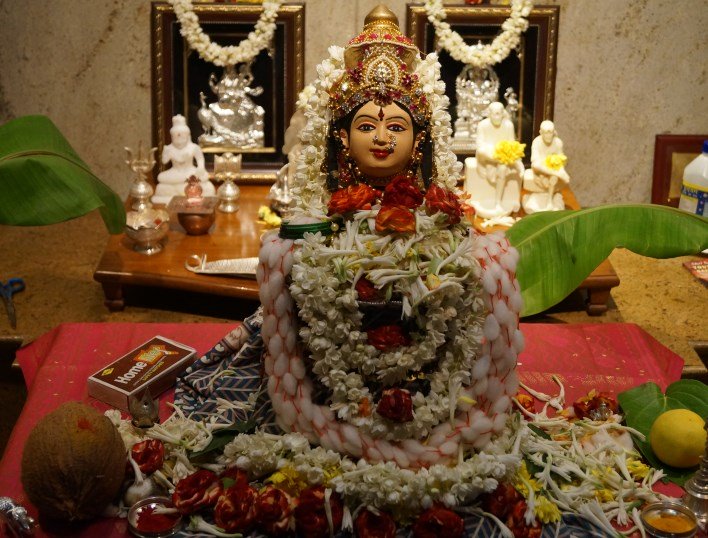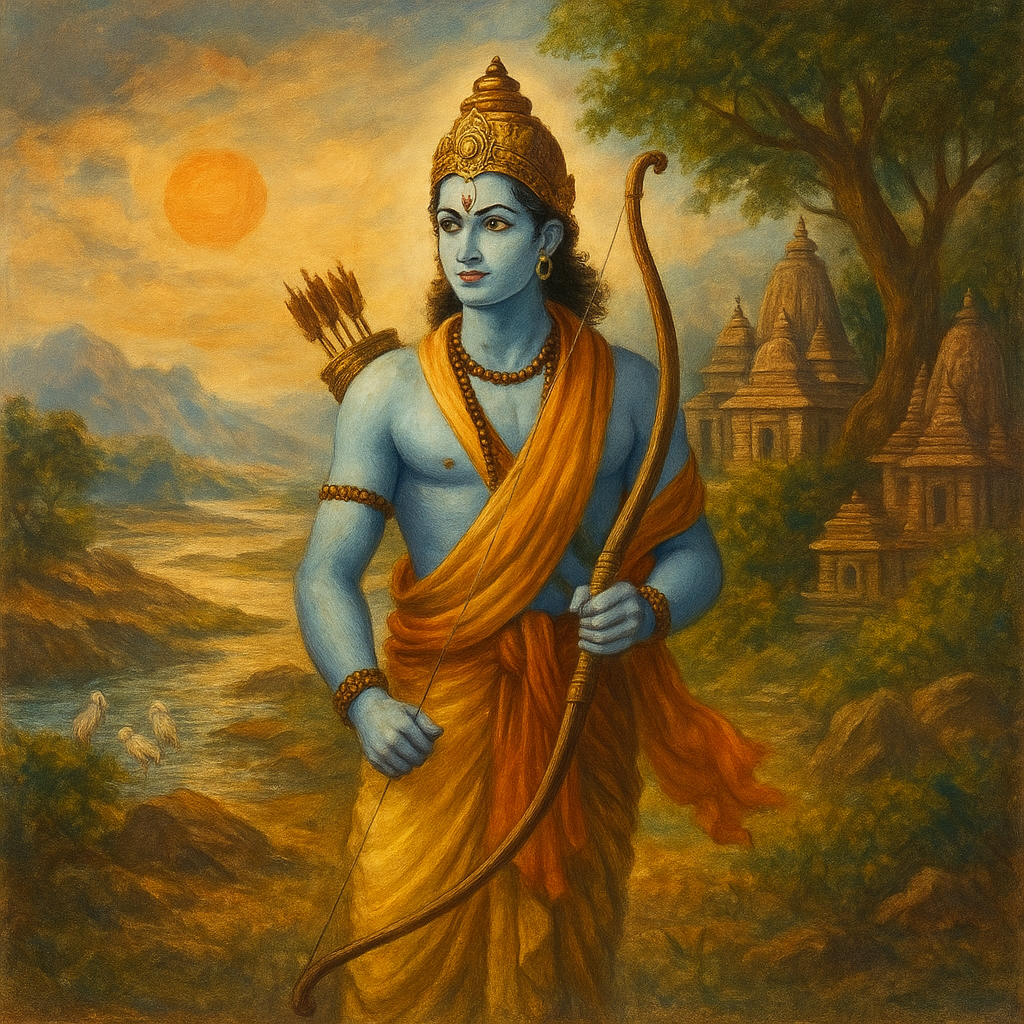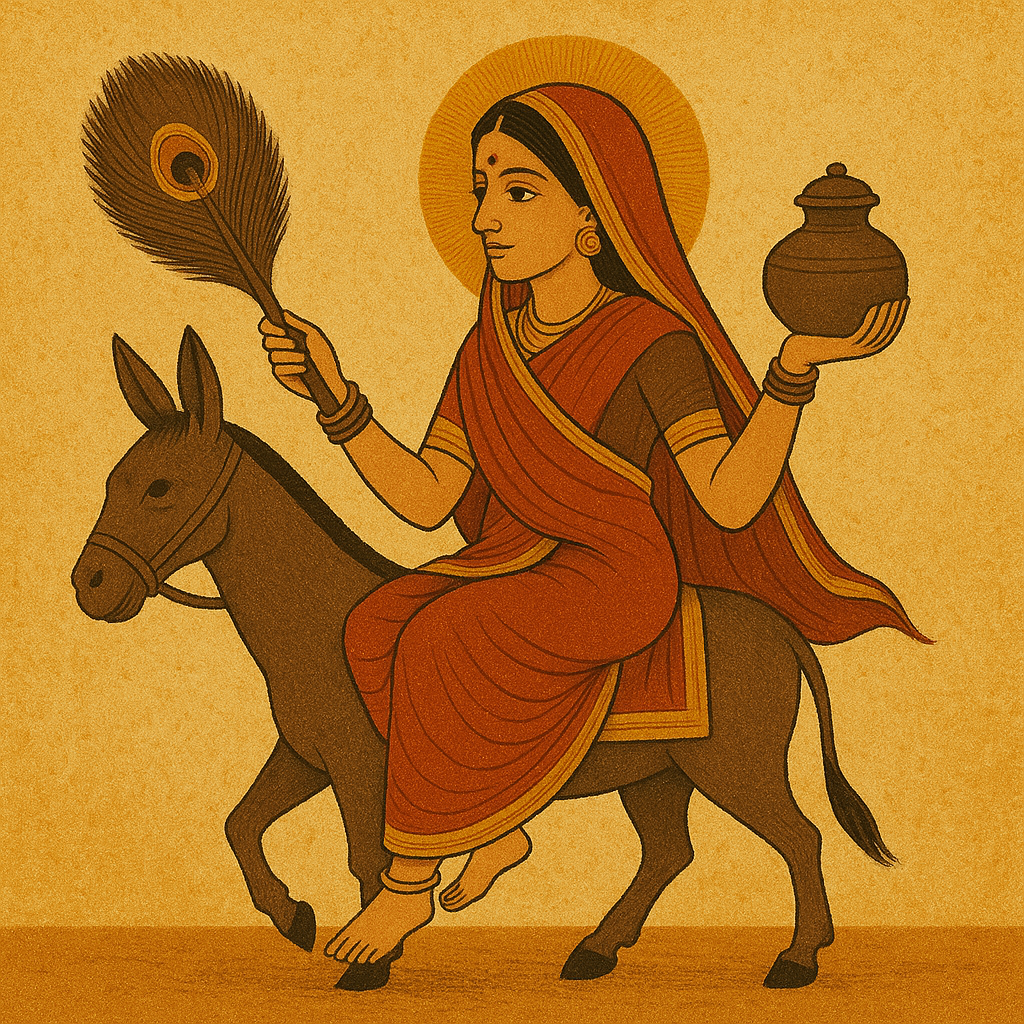Of all the festivals related to Lord Shiva and Goddess Parvati, Jaya Parvati Vrat also known as Gauri Vrat ( Saturday, July 25, 2026) is considered a significant festival dedicated to Goddess Parvati. ‘Gauri’ is one of the names of Parvati which means ‘brilliantly fair’. Gauri Vrat festival begins on the Shukla Paksha Ekadashi and ends after five days on Purnima. It is also known as Morakat Vrat in Gujarat.
.jpg)
Gauri Vrat Meaning: What Is Gauri Vrat?
Gauri Vrat is celebrated majorly in Gujarat and other western parts of India by the unmarried girls to have a husband as good as Shiva in qualities and nature. However, married women can also observe it for the well-being of her husband and family.
Also known as Jaya Parvati Vrat and Aluna Vrat, Gauri Vrat is usually or traditionally observed for five days. But there are women who follow it for a period of five or seven years.

When is Gauri Vrat? Date, Tithi, Time & Muhurat
Gauri Vrat on Saturday, July 25, 2026
Gauri Vrat ends on Wednesday, July 29, 2026
Jaya Parvati Vrat on Sunday, July 26, 2026
Ekadashi Tithi Begins - 11:42 PM on Jul 23, 2026
Ekadashi Tithi Ends - 02:04 AM on Jul 25, 2026
Gauri Vrat Story | Gauri Vrat Katha
This Vrat is considered one of the highly auspicious ritualistic celebrations or festivals. As per the legend, a Brahmin couple who were the devotees of Lord Shiva had everything but a child. Pleased with their selfless devotion, Lord Shiva blessed them and asked them to worship a Linga in the forest. No one had ever looked at it or worshipped it. If the couple worships it, their desire would be fulfilled. Soon they were in the forest, worshipping the Lingam daily. Once, the husband went out to fetch fruits for the Lingam. After a while, the wife started getting anxious as he had not yet returned, totally unaware that he had been bitten by a snake. She intensely started praying for her lost husband. Seeing her devotion, Lord Shiv was extremely pleased and brought her husband back to life. After this event, the couple began worshipping the Linga and were blessed with a baby boy.

This Vrat is considered one of the highly auspicious ritualistic celebrations or festivals. As per the legend, a Brahmin couple who were the devotees of Lord Shiva had everything but a child. Pleased with their selfless devotion, Lord Shiva blessed them and asked them to worship a Linga in the forest. No one had ever looked at it or worshipped it. If the couple worships it, their desire would be fulfilled. Soon they were in the forest, worshipping the Lingam daily. Once, the husband went out to fetch fruits for the Lingam. After a while, the wife started getting anxious as he had not yet returned, totally unaware that he had been bitten by a snake. She intensely started praying for her lost husband. Seeing her devotion, Lord Shiv was extremely pleased and brought her husband back to life. After this event, the couple began worshipping the Linga and were blessed with a baby boy.
How To Celebrate Jaya Parvati Vrat (Gauri Vrat)?

Gauri Vrat, or the Gauri Puja , is dedicated to Goddess Parvati. The Vrat is celebrated in the Ashada month as per the Gujarati calendar, beginning from the Ashada Ekadashi or Dev Shayani Ekadashi and till Guru Purnima or Ashad Purnima. These five days are regarded as Panchuka or Gauri Panchak in western parts especially Gujarat of India.
- During this vrat, women abstain from consuming vegetables, salt and tomatoes. It is believed that by such strict observance, one’s gets purified inside out.
- On day one, the family members especially women plant Javara or wheat seeds in a pot placed nearby the temple in their temple room and worship it. They create a necklace made of cotton wool and decorate it with vermillion.
- They continue to offer water to the wheat seeds in the pot until the final puja is performed on the fifth day of the Vrat in any temple dedicated to Goddess Parvati. On this day, women also break the Vrat with food items made of wheat. Then on the sixth day, they take bath early in the morning and plant the Javara in their garden.
Gauri Vrat Pooja

Click Here to Book Mahagauri Mata Puja
Performing this special Mahagauri Puja during this Vrat is highly auspicious. The same Devi is worshipped on the eighth day of Navaratri.
This puja includes:
- Kalash Sthapana
- Gath Sthapana
- Panchang Sthapana Invo
- cation of Durga
- Gauri Tilak mandal
- 64 yogini Puja
- Sapthgrihith Matrika Pujan
- Chatukashti Yogini Mangal Pujan
- Shetrapal Pujan
- Swasti Vachan
- Sankalpa
- Ganesh Pujan and Abhishek
- Recitation of Gauri Astottara Satanamavali
- Japa of Maa Maha Gauri Mantra
- Navagraha Yantra Pujan
- Navagraha Mantra Japa
- Homa
- Aarti
- Pushpanjali
Gauri Vrat Mantra & Prarthana
Mantra
ॐ देवी महागौर्यै नमः॥
“Salutations to the divine Mahagauri.”
Prarthana
श्वेते वृषेसमारूढा श्वेताम्बरधरा शुचिः।
महागौरी शुभं दद्यान्महादेव प्रमोददा॥
'Seated on a white bull, wearing white garments, and pure in nature, Mahagauri bestows auspiciousness and joy to Lord Shiva.'
Jaya Parvati Vrat Pooja Samagri

Here's a comprehensive list of essential Puja Samagri (Pooja Items) for Jaya Parvati Vrat Puja:
- Haldi Powder (Turmeric Powder): Used for purification and decoration.
- Kumkum (Vermilion): Applied on the forehead of the Deity.
- Fresh Flowers: Used for decoration and offering.
- Akshat: Raw rice mixed with turmeric powder, offered to the Deity.
- Chandan (Sandalwood Paste): Offered to the Deity.
- Coconut: Symbolizes the head of a human and is used as an offering.
- Fruits: Offered to the Deity as a symbol of purity.
- Paan ke Patte aur Supari (Betel Leaves and Nuts): Offered as a symbol of respect and gratitude.
- Ganga Jal (Holy Water): Used for purification.
- Deepak (Oil Lamp): Used for lighting and offering to the Deity.
- Agarbatti (Incense Sticks): Used to create a pleasant aroma and purify the environment.
- Ghanti (Brass Bell): Used to invoke the presence of the Deity and signal the beginning of the puja.
- Kapur (Camphor): Used for Aarti.
- Gur (Jaggery): Offered to the Deity as a symbol of sweetness.
- Gaaye ka Doodh (Cow’s Milk): Offered as a symbol of purity.
- Panchamrit: A mixture of five items - milk, curd, ghee, honey, and sugar - offered as a symbol of purity.
- Red Cloth: Used as a seat for the Deity during the puja.
- Mouli or Kalava (Sacred Thread): Tied on the wrist of the devotees as a symbol of protection and blessings.
- Murmura (Puffed Rice): Offered to the Deity.
- Atta (Wheat Flour): Used for making the Prasad.
- Holy Scriptures: Used for reading prayers and mantras.
The above list of items for Jaya Parvati Vrat Puja (Gauri Vrat Puja) can vary based on individual family traditions and the customs of different communities and regions. Therefore, it’s always best to consult a knowledgeable family member or a local priest before performing the puja. Ensuring that you follow the proper procedures and rituals with a pure heart is essential to receive the blessings of the Deity.


-in-Astrology.jpg)






.jpg)




Comments 0
Leave your thought here